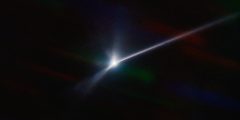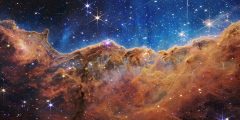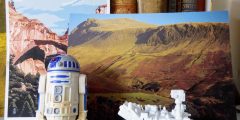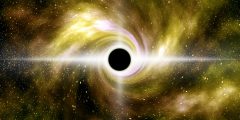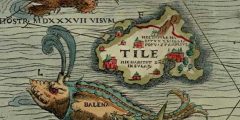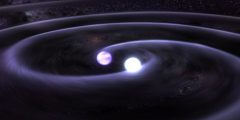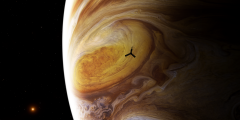Asteroids: Angst, amazement and avarice
October 14, 2022
On planet earth it is extremely difficult to change people’s, especially politicians’, behaviour to avert, say, climate catastrophe. Not so in space. Here humans boldly achieve the unthinkable, namely changing the motion of something that’s going in a dangerous direction. What I am talking about is, of course, NASA’s “first-ever mission dedicated to investigating and …
Percy and Ginny: Science and politics in space
February 26, 2021
For about a decade, I have, off and on, been writing blog posts about space, space probes and space travel as part of the Making Science Public blog. Since 2012, I have been following the Mars rover Curiosity on Twitter, or rather its digital alter ego the Sarcastic Rover. I have a cast iron model …
Looking on the bright side: Black holes
April 10, 2019
Here we go again. The world down here on earth is in dire straights, what with climate change and politics and all that. BUT there is something to be proud about. Scientists have managed to capture the first ever image of a black hole. This was achieved, not through people stamping their feet or ignoring …
When space becomes the last refuge for the soul
January 1, 2019
The last few years have been bad, in terms of climate, politics, humanity. I don’t expect this new year to be much better, unless we all pull our socks up, so to speak. Where once we were forward looking and outward looking, embracing the new, engaging with others, many are now more and more inward …
Collision, collaboration and communication
October 25, 2017
The other day I read an article on why academics are losing relevance in society. I noticed that it contained a picture of a celebratory cake with the inscription “Here’s to the first direct detection of gravitational waves” (after two black holes collided). This event happened in 2016 and was widely celebrated around the world, …
Jupiter’s Great Red Spot: Puzzles, pictures and participation
July 14, 2017
Creating new knowledge and reducing ignorance are two basic human needs. Science can help here, if we give it the freedom to do so and don’t chain it like Sisyphus to the rock of industrial production. Space missions are perhaps the prototype of humanity’s quest for knowledge, replacing more earth-bound adventures, expeditions and explorations, such as those undertaken by Alexander …
Juno, Jupiter and the art of citizen science
June 2, 2017
With political and moral life here on earth being in utter turmoil, images of/from Jupiter beamed down to our little planet by the Juno space probe have recently kept me sane (as far as that’s possible). They brought with them glimpses of beauty and moments of wistfulness. A year or so ago, I wrote a blog post …


